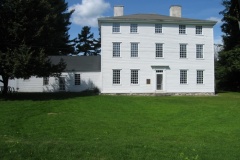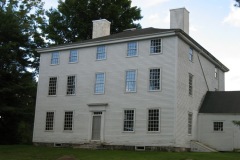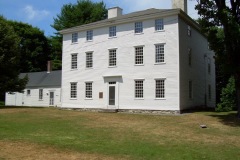Pownalborough Court House – 1761
Come Visit the Only Pre-Revolutionary Court House in Maine.
For museum hours, click here
The Pownalborough Court House still stands on its original site on the banks of the Kennebec River in Dresden. Listed on the National Register of Historic Places, the Court House is a remarkable example of colonial New England architecture.
- Visit the museum and learn about its history and collections from our trained docents
- Picnic on the grounds, visit the period garden or walk the nature trail along the river
- Hike a NEWLY DEVELOPED TRAIL SYSTEM in the forest across the road (LINK TO MAINE TRAIL FINDER MAP)
- Visit the cemetery with the graves of Revolutionary War, War of 1812 and Civil War veterans
- Come to an encampment event and watch living historians reenact colonial activities
Designed by Boston architect Gershom Flagg and built in 1761 by the Kennebec Proprietors for the newly created Lincoln County, the Pownalborough Court House received such notable visitors as John Adams, Benedict Arnold, Robert Treat Paine, William Cushing, Reverend Jacob Bailey and two future Massachusetts governors: David Sewall and James Sullivan. Numerous trials were held here, including that of Judge North which was featured in the Pulitzer Prize winning book, The Midwife’s Tale by Laurel Thatcher Ulrich, based on the diary of local resident Martha Ballard (1735-1812).
The Court House also served as a tavern, a place for church services, a dancing school, and as the Dresden Post Office from 1807-1855. In addition to its vital role in the legal history of Lincoln County and Maine, the Court House was a family home. From 1761 – when Captain Samuel Goodwin, an original Kennebec Proprietor and captain of the guard at Fort Shirley, moved his family from the guardhouse into the Court House – until 1954, his descendants used the building as their home.

 Newsletter
Newsletter Join LCHA
Join LCHA Donate Now
Donate Now





